






















































































Hello, 2025! I feel like each year brings a combination of the expected and unexpected — the rice industry certainly had both. acres were up as expected, but outside factors influenced the rice itself. Whether hurricanes or market fluctuations, there was no shortage of occurrences out of our control.

Cassidy Nemec Editor
Speaking of the market, go read this month’s uSa rice column to get a thorough examination and update on the current state of trade for rice in the world market. We shall see what the change in administration brings to the table. right off the bat, pages 7-9 provide some timely updates for the industry. From a new rice disease in Texas, to a collaborative study on the increasingly threatening issue of false smut, to the benefits of developing and maintaining soil health, there is some important and useful information here.
Pages 10-11 recap the 2024 rice Outlook Conference, which was held in Little rock, arkansas. We, along with Horizon ag and uSa rice, were honored to recognize this year’s rice awards to some very deserving honorees — go back and see the special tribute section in the December issue of Rice Farming to learn more about each winner. See page 11 to see the newly announced rice Leadership Development Class!
This month’s cover story features agriCapture, a nashville, Tennessee-based carbon credit company with a large emphasis in the rice sector. read the Q&a on pages 12-14 to learn more about this growing organization.
as Harrison Pittman, the director of the national agricultural Law Center, said, “2024 brought in some of the most consequential developments in ag law and policy in a long time.” read more about this past year’s developments on pages 16-17. One of the things I like most about variety selection is the intentionality behind it and how, while we can’t control the weather or world markets, we can make a conscious decision on what to plant and know the reasoning behind it. Lucky for us, this month’s issue is packed full of information and recommendations for just that from pages 18-22 between Dr. ronnie Levy’s article on rice quality and the rest of the Extension specialist’s comments on selecting the right 2025 rice varieties for your operation.
Finally, this month’s My Turn features Mr. Dan Bradshaw, a rice consultant from Texas. read about his journey from the Plains of Lubbock to the Texas rice country on page 22.
With everything going on in the world, I’m remaining hopeful for a productive and prosperous 2025. May it be a year of only the best kind of expected and unexpected!
Send comments to: Editor, Rice Farming Magazine, 875 W. Poplar ave., Suite 23, Box 305, Collierville, Tn 38017 or email cnemec@onegrower.com.
EDITORIAL/PRODUCTION
Editor Cassidy Nemec cnemec@onegrower.com
Copy Editor Carroll Smith csmith@onegrower.com
Digital Content Editor Katie Guthrie kguthrie@onegrower.com
Art Director Ashley Kumpe akumpe@onegrower.com
Publisher/Vice President Lia Guthrie 901-497-3689 lguthrie@onegrower.com
Associate Publisher/Editor-In-Chief Carroll Smith 901-326-4443 csmith@onegrower.com
Associate Publisher/Sales Manager Scott Emerson 386-462-1532 semerson@onegrower.com
Production Manager David Boyd dboyd@onegrower.com
Audience Services Kate Thomas 847-559-7514
For subscription changes or change of address, call 847-559-7578 or email ricefarming@omeda.com.
ONE GROWER PUBLISHING, LLC
Mike Lamensdorf President/Treasurer Lia Guthrie Publisher/Vice President
LLC also publishes COTTON FARMING, THE PEANUT GROWER, SOYBEAN SOUTH and CORN SOUTH magazines. RICE FARMING (ISSN 0194-0929) is published monthly January through May, and December, by One Grower Publishing LLC, 875 W. Poplar Ave., Suite 23, Box 305, Collierville, TN 38017. POSTMASTER: Send address changes to OMEDA COMMUNICATIONS, CUSTOMER SERVICE DEPARTMENT, P.O. BOX 1388, NORTHBROOK, IL 60065-1388. Annual subscriptions are $25.00. International rates are $55.00 Canada/Mexico, $90.00 all other countries for Air-Speeded Delivery. (Surface delivery not available due to problems in reliability.) $5.00 single copy.
All statements, including product claims, are those of the person or organization making the statement or claim. The publisher does not adopt any such statement or claims as its own and any such statement or claim does not necessarily reflect the opinion of the publisher. RICE FARMING is a registered trademark of One Grower Publishing LLC, which reserves all rights granted by the U.S. Patent and Trademark Office in association with its registration.
© Copyright 2025
One Grower Publishing, LLC 875 W. Poplar Ave., Suite 23, Box 305 Collierville, TN 38017
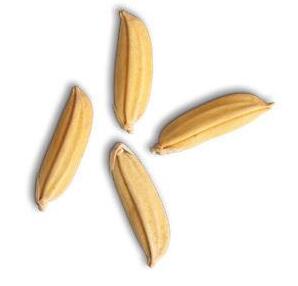

Signs are pointing to high rice seed demand for 2025, and reliable seed suppliers like Horizon Ag, who stepped up to help meet the increased demand last year, are preparing to do the same this season.
“Each year we plan our seed production for the predicted acreage, but then also plan for upside,” says Dr. Tim Walker, CEO of Horizon Ag. “In 2024, we had good seed production and had about 25 percent more seed to sell to growers looking for top-performing varieties. We rose to the challenge, supplying varieties offering excellent yield and milling quality potential.”
Thus far this season, Horizon Ag is seeing considerable interest in proven Clearfield® varieties like CLL18, CLL19 and CLL16, as well as Provisia® varieties PVL04 and PVL03.
“One of our goals is to be a consistent, reliable supplier of seed, especially when it comes to our repeat customers,” says Dr. Walker. “We know rice growers are counting on us, and we have done our very best to anticipate demand again this season. We have received more calls for our varieties earlier than ever.”
Dr. Walker said one reason for the demand is farmers who hadn’t planted Clearfield or Provisia varieties from Horizon Ag in many years had a chance to see how well they fit their operations and the impact on their bottom line.
For instance, CLL19 was new in 2024 and was planted on a considerable acreage in the Southern Rice Belt.

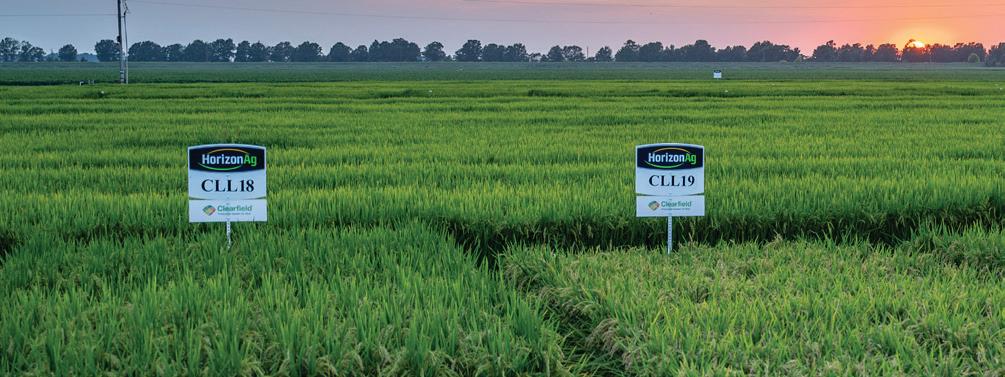
In addition to CLL18, a very high-yielding Clearfield line that growers are asking for, Horizon Ag also is seeing continued strong interest in CLL16, which has won its place in fields across the region because of its proven flexibility and consistency.
The conventional statured long grain variety maintains strong yield potential, even with later planting dates, and is known for its excellent seedling vigor. CLL16 is moderately resistant to lodging and is resistant to blast.
“This is a variety that is near the top in yields, year in and year out,” says Dr. Walker. “With the economic challenges many growers face because of low commodity prices, a reliable performer like CLL16 is a variety that growers want to have somewhere on their farm.”
Provisia variety PVL03 has been the top variety planted in Louisiana and is expected to go out on a lot of acres again in 2025. PVL04 also yielded very well in many areas of the North Delta in its first year of commercial planting last season.
“Growers in Louisiana and Texas particularly like the earliness of CLL19,” says Dr. Walker. “It’s a great choice in South Louisiana where a ratoon crop is very important. We have received many reports about the strong performance of both the first and second crop CLL19 this year.”

New for the coming year from Horizon Ag is a high amylose variety — CLHA03 — that will be a great fit in areas where growers are contracting production to receive a premium for quality and identity preservation. CLHA03 meets the cooking and grain texture quality that is in demand by Central American buyers, while still providing growers here with top-end yield potential.
Medium grain growers also can expect a potential step up in yields this season with the new CLM05 from Horizon Ag, which joins proven medium grain performer CLM04.

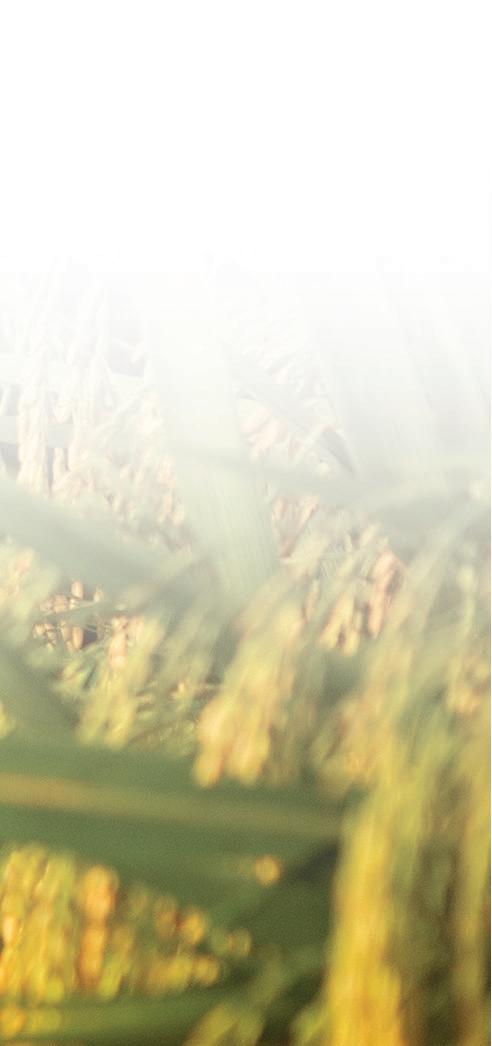

By Peter Bachmann President and CEO USA Rice
There are few american commodities as dependent on trade as rice is. Despite being a relatively small crop in terms of u.S. acreage, we are the 5th largest exporter in the world and the largest in the Western Hemisphere. and about half of the southern crop and an even greater percentage of the California crop are destined for mills and markets in more than 120 countries around the world. Trade is important to us!
For the past four years, we have decried the lackluster trade agenda of the Biden administration: we thought they might build on successes with Cuba from the Obama/Biden days. not really. We were forced to drag, push, and pull his uSTr to file a WTO case against India, despite overwhelming evidence of the world’s top rice exporter’s misdeeds. We also didn’t see any sense of urgency to find new export markets where u.S. rice would be sought after, and in fact, President Biden walked away from free trade talks with the united Kingdom that were started during Trump 1.0.
The $773.4 billion question is: what will President Trump’s trade agenda look like in his second term? The legacy from his first term left rays of hope.

The north american Free Trade agreement was renegotiated and reimagined as the u.S.-Mexico-Canada agreement, which was fine. But after the u.S. pulled out of the Trans Pacific Partnership, what replaced it gave some of our top competitors easy access to Mexico who were able to displace us to some extent. and of course, the nomination of Florida Senator Marco rubio to be Secretary of State doesn’t bode well for u.S.-Cuba relations. and then of course, there were the retaliatory tariffs on u.S. agriculture in response to completely unrelated steel and aluminum tariffs that seem to be on the horizon for us all again. as we know from recent history, no matter what the u.S. slaps a tariff on, if a country is going to retaliate, they generally first turn to agriculture. and rice, so export dependent, can disproportionately bear the brunt. Like we have done in China, Europe, Turkey, and the uK. We will have to wait and see how his tariff plan plays out; perhaps it ends up being more
targeted than initially advertised.
The President wants to appeal to import sensitive industries, like steel and aluminum, but let’s not forget that u.S. rice has long been a staple in the domestic market, and we’ve been rapidly losing market share to underpriced imports, making us a perfect example of an import sensitive industry. So, if President Trump is going to target tariffs, we respectfully request he look at rice imports from the world’s top four exporters in the Far East. The rice exporters in the region — India chief among them — do not play by the rules. They openly acknowledge this to the World Trade Organization.
India, because of their sheer volume and market dominance, make it practically impossible for anyone to compete. In some cases, like with Thailand and Vietnam, they begin cheating to keep up. Our government couldn’t ever afford to catch up to what they’re doing and even if we could, we’d be violating the rules.
a major factor in the need for an improved safety net for u.S. rice is that India artificially suppresses global rice prices while input costs continue to soar. India then significantly over-produces and ships that excess, underpriced rice across the world.
There is a direct link between unfair trade practices and emergency assistance for u.S. agriculture. This is a point we believe the trade officials in Trump 2.0 will see clearly.
as of this writing, Jamieson Greer has been nominated to be the next u.S. Trade representative. Mr. Greer was the chief of staff to President Trump’s former uSTr, robert Lighthizer, who was keenly aware of the important role agriculture plays in trade and the degree to which market manipulators can make trade unfair and threaten honest u.S. producers. We are encouraged that as an alumnus of the first Trump administration and a supporter of agriculture, future ambassador Greer will follow-through on several key initiatives that support our industry.
We head into the new administration with many opportunities that bring with them their own challenges. We caution against all out trade wars and look forward to working with the Trump administration on trade initiatives and if necessary, targeted tariffs that would level the playing field for our producers. Welcome back to Washington, Mr. Trump.
By Xin-Gen (Shane) Zhou, Lina Bernaola, Nupur Sarkar, Gary Bradshaw, Sam Rustom, and Sabin Khanal
Anew viral disease, Hoja Blanca, caused by the rice hoja blanca virus (rHBV), has been visually identified in 1,400 areas of ratooned rice crops in Wharton County and 450 acres in Waller County. However, the actual acreage affected is suspected to be much larger. Impacted rice varieties include PVL03, CLL18, CL153, CLJ01, Dixiebelle, and Presidio, with 5% to 20% of plants showing symptoms. The disease emerged roughly three weeks after the main crop harvest (Fig. 1). Infected plants showed the following symptoms (Fig. 1):
■ Chlorotic stripes — yellow or whitish stripes primarily on flag leaves.
■ Leaf discoloration — mottled appearance with patches of yellow or pale green among healthy tissue.
■ Stunted growth and reduced tillering.
■ Incomplete panicle exertion.
■ Sterility or absence of flowers.
■ Distorted and bronzed palea and lemma.
■ Incomplete grain filling, resulting in reduced yields.
Transmission
This virus is transmitted by the rice delphacid (Tagosodes orizicolus) (Fig. 2). The rice delphacid is an invasive species native to Central and South america and the Caribbean. This insect was first detected in Galveston County, Texas, in 2015, and has since spread to other rice-growing counties in Texas. In 2024, the planthopper has become problematic in ratoon crops. Weather-related events like hurricane Beryl on July 8, 2024, may have contributed to an increase in planthopper populations.
This is the first documented case of Hoja Blanca in Texas, though the disease has previously been reported in Florida, Louisiana, and Mississippi. The presence of this new viral disease poses a serious threat to Texas rice production, as it can cause up to 75% yield loss, a major issue in Central and South america and the Caribbean. Drs. Zhou (plant pathologist) and Bernaola (entomologist) are working together to better understand how the virus is transmitted by the insect vector and identify potential alternative plant hosts.





■ Implement weed control, especially for grass species such as Echinochloa spp., which can harbor the virus.
■ avoid successive rice plantings in fields with a known history of Hoja Blanca to minimize recurrence.
■ apply insecticides to control rice delphacid populations. Endigo ZCX and Tenchu 20SG are currently labeled for use. users must have the insecticide labels in their possession at the time of application.
■ use resistant rice varieties to reduce the risk of future outbreaks. The rice entomology program is currently assessing common rice varieties against this pest.
Farmers are advised to monitor their fields closely for the presence of both the insect and Hoja Blanca symptoms to help minimize further losses. We would like to emphasize that the full extent of the disease and insect outbreaks will remain unknown until growers, dealer representatives, crop consultants, and county Extension agents actively begin monitoring both the disease and the planthopper.
For more information on diagnosing and managing Hoja Blanca, please contact Dr. Xin-Gen (Shane) Zhou, plant pathologist, at xzhou@aesrg.tamu.edu or (409) 245-8627. For inquiries about rice delphacids and their management, please contact Dr. Lina Bernaola, entomologist, at lina.bernaola@ag.tamu.edu or (409) 245-8632.
Authors include Xin-Gen (Shane) Zhou, Lina Bernaola, Nupur Sarka and Sabin Khanal, Texas A&M AgriLife Research and Extension Center at Beaumont, TX; Gary Bradshaw, Bradshaw Agricultural Consulting, Pattison, TX; and Sam Rustom, Texas A&M AgriLife Research Wintermann Rice Research Station at Eagle Lake, TX.
By Olivia McClure LSU AgCenter
Adisease called false smut is posing a growing threat to the global rice crop, and LSu agCenter scientists are part of an international group working to learn more about the problem.
Felipe Dalla Lana, a plant pathologist at the agCenter H. rouse Caffey rice research Station near Crowley, and Vinson Doyle, a mycologist based on the LSu campus in Baton rouge, are working with colleagues from more than 20 institutions worldwide through the International rice False Smut Consortium. They recently traveled to the International rice research Institute in the Philippines to meet with fellow consortium members for a workshop.
While false smut is not unheard of in Louisiana rice fields and has been in the state since at least the 1920s, the disease is not currently a major concern for farmers here. False smut can be found in many rice-growing countries and is particularly problematic in China and India. and the disease is expanding its range.
“In other parts of the world, we are seeing a shift,” Dalla Lana said. “Where this disease is usually not a problem, now it has become more prevalent.”
False smut, which is caused by a fungus that replaces the kernels of rice plants with fungal structures, reduces yields and quality. It is similar to kernel smut, which is more common in Louisiana.
Dalla Lana and Doyle — along with their research partners around the globe — want to find out why false smut, which was first discovered in India in the late 1800s, has become such a big problem lately.

Dalla Lana is researching the disease’s behavior and how factors like weather, soil, and rice variety might affect it.
“What we are trying to do is understand why we have outbreaks, why we don’t have outbreaks, what makes the shift from it being a minor problem to being a major problem,” he said.
Doyle plans to examine both historical and recent false smut-infected specimens to learn more about the disease, how it has changed over time and how it has spread around the world. He believes historical patterns can shed light on the disease and possible management strategies.
“Historically, this disease has been associated with really good
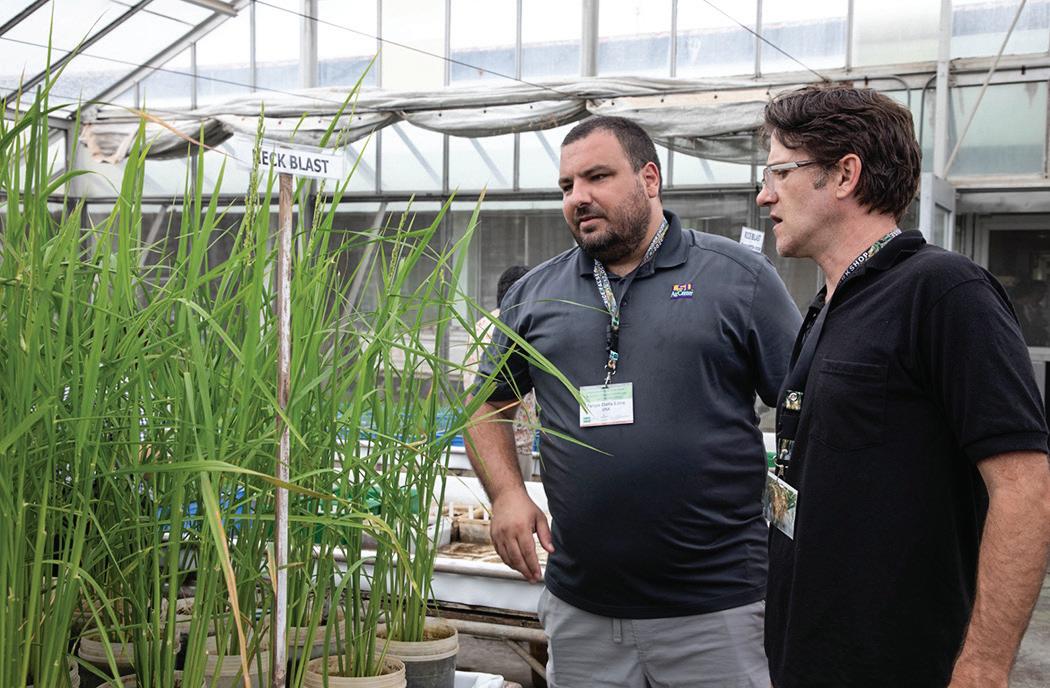
harvests. When farmers in India saw this disease, they knew it was indicative that a ‘golden harvest’ was coming,” he said. “and there’s been some associations with elevated nutrient levels. So maybe when you’ve got adequate nutrients in the soil and you get a good harvest, that also ends up inducing this disease to emerge.”
False smut damage seems to be worse in fields planted with high-yielding varieties, Doyle said. Many modern varieties grown in Louisiana have been bred with high yields in mind.
“What’s happening in other parts of the world, we can use as a warning for what might start happening here,” he said. “We certainly have to pay attention to it.”
Both researchers hope the work of the international consortium will uncover much-needed information about this emerging disease threat and speed up the process of identifying solutions.
“Because we work within the global research group, we can have data from different environments and different conditions that we cannot replicate here,” Dalla Lana said. “We can have a better understanding of the pathogen and try to anticipate changes that might happen here in Louisiana and have a plan before it becomes a major problem.”
“We’ve got dozens and dozens, if not more, questions that need to be answered. and oftentimes, one of those question takes a whole research lab several years to address,” Doyle added. “When you can put a team of researchers together like the several dozen that are in this consortium, you can start to tackle lots of different questions simultaneously.”
Olivia McClure is an associate communications specialist at LSU AgCenter.
By Judith Eppele University of California Bonnie Reiss Leading on Climate Fellow
Farmers placed clumps of soil into metal mesh baskets, submerged the baskets into jars of water, then watched to see if their soil held together. The slake test, conducted at the Soil Health Field Day in Woodland, California, measured soil health. Healthier soil, which contains more organic matter and bioactivity and can better support plant growth, stays intact.
“Participants said that it was particularly useful to see the slake test on a variety of soils to better understand the nuance of how soil health management practices such as cover cropping and reduction of tillage intensity could affect soil aggregation,” said Sonja Brodt, university of California Sustainable agriculture research and Education Program coordinator for agriculture and environment, who attended the field day alongside Vivian Wauters, Sustainable agriculture research & Education Program project scientist.
Technical assistance providers, farmers, and other soil health professionals gathered at the Center for Land-Based Learning on nov. 19 to learn about preparing soil for winter with a specific focus on how soil health impacts soil structure, as well as the ability for water to move through soil as opposed to puddling or running off a field.
“Soil with stable aggregates can withstand this submersion and stay intact, whereas a soil with poor aggregation will fall apart in the water,” Wauters explained.
This in-field test can produce dramatically different results. Poorly aggregated soil colors the water, while the stable, aggregated soil will leave the water column relatively clear.
Farmers were invited to bring their own soil samples to perform slake tests at the field day. Kabir Zahangir, u.S. Department of agriculture natural resources Conservation Service regional soil health specialist, compared soils from different management practices and discussed how to assess aggregate stability and soil water infiltration.

Katharina Ullmann, Organic Agriculture Institute training and technical assistance coordinator, left, and Andrew Brait, field day panelist from Full Belly Farm, view results of soil health test.
Margaret Lloyd, uC Cooperative Extension small farms advisor for the Capitol Corridor, and Lindsey Kelley, uCCE small farms community education specialist, discussed regional benchmarks for soil health.
attendees heard from experienced growers, Scott Park of Park Farming Organics and andrew Brait of Full Belly Farm, who described how they assess soil health on their farms.
By collaborating with others, Brodt said farmers and researchers are achieving benefits through learning together in real time. “We will also be able to benefit from aggregating soils data from across regions to begin to develop a statewide soil health database, which is a critical step in order for researchers to be able to determine relationships between farming practices and soil health outcomes under California conditions in the future,” she said.
Slake tests can be performed on soil from one’s own backyard, garden, or farm to better understand the health of the soil. additionally, the nrCS principles of soil health — minimized disturbance, maximized biodiversity, maximized soil cover, and maxi-
mized living roots — can be applied across all scales, though the specific practices will vary based on the type of yard or farm as well as the local climate and soil type.
Brodt and Wauters, who coordinate the California Farm Demonstration network, emphasize that it’s important to have local examples of innovative conservation practices across the state so people can see what is working to protect and enhance the soil health in their specific region. They encourage farmers and technical assistance providers to visit https://www.calfarmdemo. org/ to find local farms that are showcasing innovative practices. Farmers interested in being a farm demonstration site are also encouraged to contact Brodt (sbbrodt@ucanr. edu) and Wauters (vwauters@ucanr.edu).
“CDFa has funding programs, such as their Healthy Soils grants, that farmers in our network can apply for to help cover the costs of implementing soil health practices,” Brodt said.
Current work on the California Farm Demonstration network is funded through a university of California Office of the President Climate action Grant.

The annual Rice Awards were presented on Dec. 7 in Little Rock, Arkansas.

Mike Sullivan (right) was recognized as the 2024 Distinguished Conservation Achievement Award winner by Leo LaGrande (left) after a 40-plus-year career with the U.S. Department of Agriculture’s Natural Resources Conservation Service. “This award recognizes exemplary leadership and significant conservation efforts that have benefited the U.S. rice industry, natural resources, waterfowl, and wildlife at local, state, and national levels,” said LaGrande.

The 2024 Rice Awards honorees from left to right: Al Montna, Rice Lifetime Achievement Award; Dr. Jason Norsworthy, Rice Industry Award; and Michael Fruge, Rice Farmer of the Year.


The Riceland Sustainability Team and its Carbon Ready Program received this year’s Rice Sustainability Award. Adam Shea, vice president of government affairs and sustainability at Riceland Foods, Inc., accepted the award with the Sustainability Team members, Austin Brown and Chandler Holcomb. “What an honor it is for our program to receive this recognition from our peers in the rice industry,” Shea said.


Members of the 2025 rice Leadership Development Class were announced recently during the annual rice awards Luncheon at this year’s uSa rice Outlook Conference. The class is comprised of seven rice industry professionals selected by a committee of agribusiness leaders.
“This is an excellent group that displays exceptional leadership potential,” said rice Foundation Director Dr. Steve Linscombe. “They also represent a mix of southern and west coast individuals which always makes for good class dynamics.”
The new rice producer class members are Max alves, Woodland, California; Lee atwill, Little rock, arkansas; Wyatt Hardee, Gueydan, Louisiana; Logan Lemoine, Cheneyville, Louisiana; and Courteney Wall-Sisk, Para-
gould, arkansas.
The new industry-related class members are Jeff Burns, Stuttgart, arkansas; and Connor Webster, Baton rouge, Louisiana.
The rice Leadership Development Program gives young men and women a comprehensive understanding of the u.S. rice industry, with an emphasis on personal development and communication training. During a two-year period, class members attend four one-week sessions that are designed to strengthen their leadership skills.
John Deere Company, riceTec, Inc., american Commodity Company, and Supreme rice are sponsors of the rice Leadership Development Program through a grant to The rice Foundation, and uSa rice manages the program.
AgriCapture, a nashville, Tennessee-based carbon credit company established in 2021, is taking the rice industry by storm. read the following Q&a with president Tyler Hull to find out more about the company and its goals for rice.
AQHow did AgriCapture come about?
“There’s a farmland investment company here in nashville called Land Fund Partners. I was at Land Fund Partners back in 2020, and in September of 2020, protocols came out to generate carbon credits in agriculture. I started doing a deep dive to try and understand how these protocols worked and learning what practices farmers can do. We started meeting with a lot of the different companies in the space that were doing carbon or looking at doing ag carbon and didn’t feel like the right fit was out there — we didn’t feel like they really understood farmers, so we didn’t feel like they understood the economics. We thought, ‘We know farmers and we have good relationships with farmers, so we’ll set up our own company to do this ourselves.’ So, agriCapture spun out of Land Fund Partners in 2021, and now they’re two totally separate entities.
“We started with focusing on corn, cotton, and beans. We realized quickly that it’s really hard for the juice to be worth the squeeze in soil carbon, so we pivoted to rice because the opportunity to reduce methane emissions was so significant (carbon credits are issued in tons of CO2 equivalent, and methane is 28 times more potent as a greenhouse gas than carbon). reducing one ton of methane is the same as sequestering 28 tons of carbon, so the unit economics were much more attractive in the rice space because you can generate more credits per acre as you’re reducing methane emissions. That’s how rice became our crop of focus.”
AQWho all is involved with AgriCapture?
“We have 20 employees. Most are here in nashville. This is all of our technology staff, so we have data engineers and GIS specialists, a remote-sensing team, and our marketing and communications team here. Then we have a second office in Little rock, arkansas, that’s our more farmer-facing team. as we grew our acreage and number of farmers we worked with, we hired a rice programs manager and agronomists for that location. When we got more integrated with the supply chain tracking post-harvest storage and segregation and identity preservation through the milling process, we needed a little bit more boots-on-the-ground presence in the Delta.”
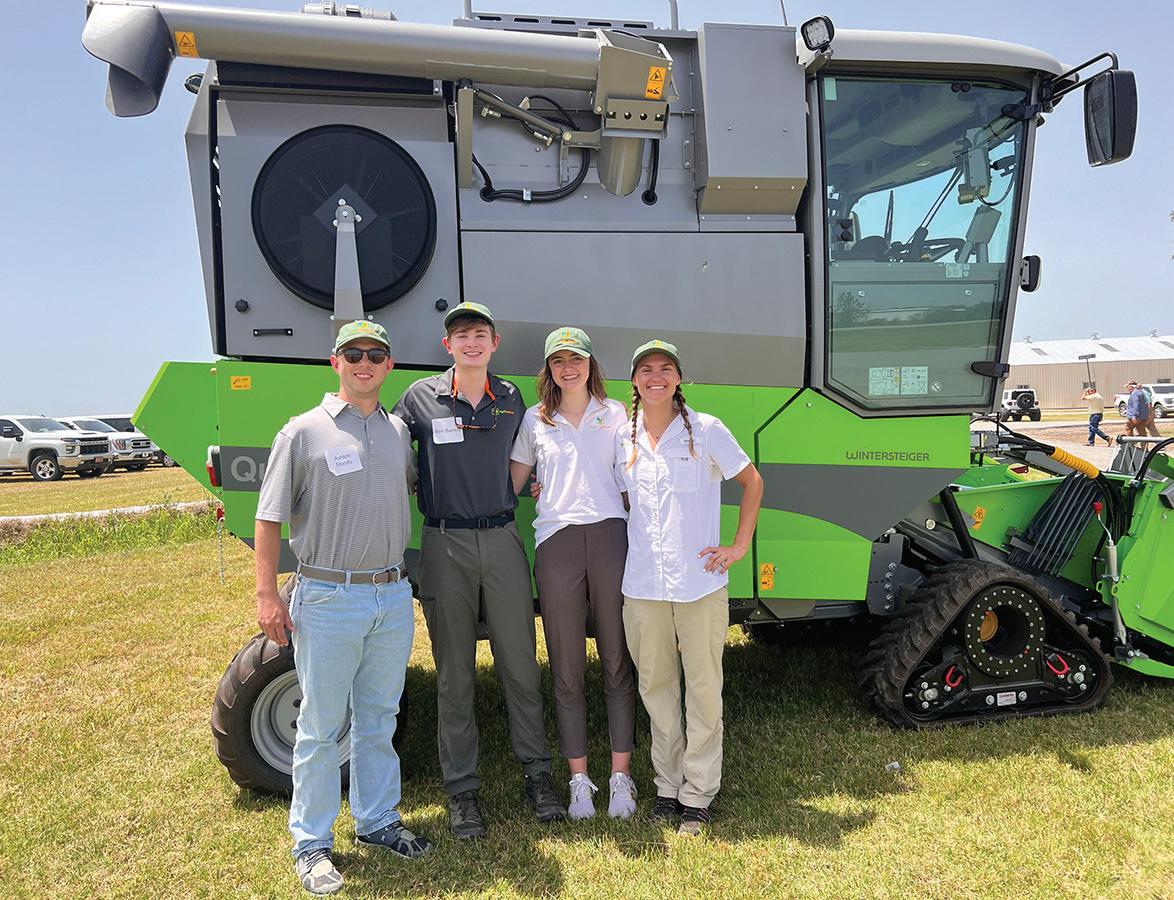
AQWhere do you see AgriCapture going in the short-term and long-term?
“In the next one to five years, we want to build the market for sustainable rice. rice is a fascinating crop where the same practices can reduce water by 30%+, which also reduce methane emissions by 60%+, which also reduce the uptake of arsenic in the grain by 40%+. I don’t want to call it the silver bullet, but it’s a huge opportunity that we can grow rice this way, feed a growing population, and it’s healthier for the consumer and better for the environment. We hope to make identity-preserved rice that’s grown this way an industry standard here in the u.S., so when you’re buying rice from the grocery store or any domestic provider, you know where it’s sourced from and how it’s grown.
“Beyond that, we understand that rice is a commodity, and there’s going to be a lot of rice that will be exported with low cost often being the driver. That’s where we want to be able to provide a financial incentive to all these growers through carbon credits. at the end of the day, there’s only so many consumers who are buying rice off the shelf, but we want to incentivize farmers. We want it to be a true financial incentive; we don’t want to require farmers to adopt practices that aren’t economical for their operation, but we want to be able to provide a signal that says ‘If you are willing to do this, this is what it can mean in terms of dollars per acre.’
“We’re on north of 50,000 acres this year but would love to be on hundreds of thousands of acres in the coming years and maybe do some pilot projects internationally in other rice-growing areas. We’ll also probably continue to build out our team in arkansas

just because it’s a very relational industry, and we get that.”
AQHow is AgriCapture reaching out to people?
“It’s a lot of miles on the tires — we go to rice Outlook and field days. We get a lot of interest from farmers just through word of mouth. We haven’t had the approach of ‘let’s go sign up a million acres right out of the gate.’ It’s more of ‘let’s get it working with farmers and get them paid.’ The cool thing about doing it that way is it works, and you get a lot of farmer referrals that happen pretty organically.”
AQHow far does your territory expand as of now?
“We’re currently in five of the six rice-growing states — Texas, arkansas, Mississippi, Louisiana, and Missouri — with the plan to be in California in 2025. What’s exciting is we’ve set up our system to be able to address any rice-growing region and also understand the nuances of a Delta rice production system versus Texas versus California versus Louisiana. We’ve said we want to be able to provide this to farmers across the country, so we’re going to have to get our feet wet in each state. We’ve been very intentional about picking up acres in each state with different geographies for that reason.
“It’s crazy because rice is the largest greenhouse gas-emitting
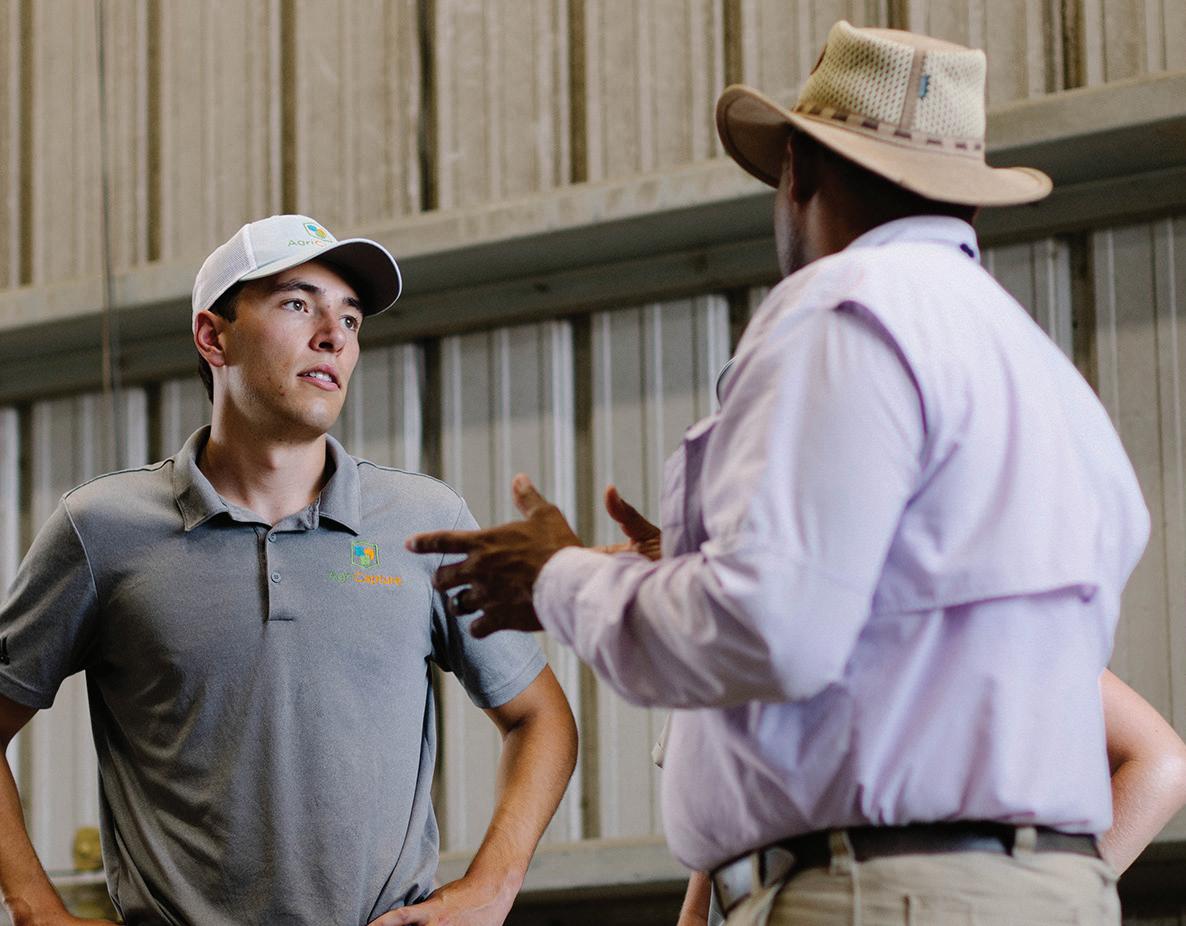
“There are lots of places you could get a carbon credit, but to drive meaningful water savings, there are few places where you can have the level of impact that you can have in the rice sector,” Tyler Hull, president of AgriCapture, said.
crop in the world, but u.S. rice farmers had not been able to participate in the u.S. carbon market until recently. We have a carbon market developing and all these financial services, oil and gas, and tech companies looking to offset their emissions, and one of the
Lee Atwill, senior agronomist for AgriCapture, in the field with water sensors.

most significant areas we can do that in is the rice industry and drive that revenue and those dollars to u.S. rice farmers. Because rice is a complex crop, quantifying those emissions and having the data to prove it, dealing with water and flooding and the absence of flooding, makes it all a complex and niche system that got left behind in the carbon market to some degree. So for us, that just seemed like opportunity, so it’s exciting to develop this but also bring it to all the rice-growing states.”
AQWhat kind of tools does AgriCapture use to measure all these data points?
“It always starts with farm maps. We get farm maps in a variety of forms from farmers, then we load it into a geospatial database here in nashville. We use Google Earth engine and a couple other satellite data providers to track flooding or absence of flooding on the field, crop rotations, and whether we detect if it was burned, incorporated, or winter flooded. Then we have third-party soil sampling providers who will test for clay content and test for soil carbon. We kind of have a combination of remote sensing from our GIS team using satellite data and this element of direct data capture from maps, soil tests, yield data, etc. We tried to think, ‘what can we get without bothering the farmer? Let’s start there and get a map to see everything we can see from satellite’ and then ‘what can’t we see or what do we need to have that we have to go to the farmer with?’”
AQDo you have certain requirements for working with a grower or their operation?
“We always work with farmers who are introducing some level of aeration to their soil. That’s typically farmers who
“We have a carbon market developing and all of these financial services, oil and gas, and tech companies looking to offset their emissions, and one of the most significant areas we can do that in is the rice industry and drive that revenue and those dollars to U.S. rice farmers.”
are doing alternate wetting and drying or furrow irrigation. Those two practices are the two most common practices reducing water and methane emissions, so that’s kind of our primary requirement. We don’t have an acreage minimum or anything like that.”
AQIs there anything else readers should know about AgriCapture?
“Something really cool came about recently when we were issued 37,000 carbon credits. In order to generate those 37,000 carbon credits, we saved nine billion gallons of water. What we’re seeing is more companies really caring about the water savings. In the same way companies have carbon or climate goals by 2030, they’re also setting water goals. There are lots of places you could get a carbon credit, but to drive meaningful water savings, there are few places where you can have the level of impact that you can have in the rice sector. We’re seeing rice farmers are well positioned to be on the leading edge of the burgeoning water market, so it’s cool to see how we can make u.S. ag and specifically u.S. rice farmers a recipient of the flow of those dollars.”
Texas Farm Bureau is committed to empowering the youth of Texas by investing in scholarships and programs to help students develop leadership skills and a future in agriculture.
This year, TFB will award $552,000 in scholarships, and over $650,000 in scholarships is provided through county Farm Bureaus.
“Through this scholarship program, Farm Bureau is cultivating the next generation of farmers, ranchers and agricultural advocates who will sustain and strengthen our state’s agricultural legacy,”

McKenna Bush, TFB youth Outreach coordinator, said.
There are four high school scholarships available from the state’s largest general farm and ranch organization: Memorial/Honorary and District Scholarships, young Farmer & rancher Scholarship, Dick Mitchell Memorial Scholarship, and Jana Middleton Student Success Series Scholarship.
Enrolled college students can apply for four scholarships at the state level: S.M. True Jr. agricultural Scholar award, rural Veterinary Scholarship, Mia Balko Student Teaching Scholarship, and young Farmer & r ancher Scholarships for Enrolled College Students.
Instructions for Scholarship Applications
all scholarships require the student to be part of a TFB member-family to apply, and membership must be maintained for the duration of the scholarship.
The deadline to apply and submit completed 2025 scholarship applications online is March 3, 2025, before midnight. Visit texasfarmbureau.org/scholarships for scholarship details, instructions, and a link to the applications.
—
Julie Tomascik, Texas Farm Bureau
The american Farm Bureau Federation’s annual convention is set for Jan. 24-29 in San antonio, Texas. The event will offer unique insights on the policies and perspectives that will affect farms, ranches, and agribusinesses in 2025 and beyond.

“Step up, Drive Forward” is the theme of the 106th consecutive aFBF Convention.
“Farmers and ranchers are always looking to the future, whether that’s finding ways we can be more innovative and efficient or building up our local communities,” aFBF President Zippy Duvall said. “The 2025 american Farm Bureau Convention will showcase that spirit across agriculture and the Farm Bureau family as we step up and drive forward together. I look forward to seeing you in January in San antonio as we gather together to kick off another year of feeding, clothing and fueling our great nation.”
Duvall will give his annual address to Farm Bureau members
during the convention’s opening general session on Sunday morning, Jan. 26.
Eric Boles, a global expert in talent development, change management, and cultural transformation, will address attendees as closing general session keynote speaker on Monday, Jan. 27. Boles is founder and CEO of The Game Changers Inc., a leadership training and development company headquartered in Lakewood, Washington. He learned principles of peak performance, team dynamics and leadership from his experience as a wide receiver with the national Football League’s Green Bay Packers and new york Jets.
a full lineup of engaging workshops will be available at convention. Workshops will be offered in four tracks — public policy, rural development, member engagement, and consumer engagement. Topics will include the Farm Bill, hot topics in public policy, the 2024 election, farmer mental health, farm transition planning, and engaging the next generation of agriculturalists.
a vibrant trade show with exhibitors showcasing cutting edge innovations in agricultural technology, tools, and services is also sure to capture the attention of attendees.
In addition, numerous optional farm- and ag-related day tours are available for attendees who wish to explore the Lone Star State. These include working farms and ranches, a beef cattle feedyard, a greenhouse, a turfgrass operation, vineyards, a cotton gin, and the historic town of Luckenbach. attendees can also sign up to explore a buggy barn, the Chisholm Trail Museum, the national Museum of the Pacific War, and more.
The official event hashtag is #aFBF25, and the event website is https://annualconvention.fb.org/.
The Louisiana agricultural Technology & Management Conference will take place Feb. 12-14, at the Paragon Casino resort in Marksville, Louisiana.
Topics include Endangered Species act workplan and implementation updates, emerging technologies, policy and regulation updates, and crop-specific breakout sessions.
Participants interested in the pre-conference workshop covering new regulations and recertification criteria for commercial applicators and federal and state regulatory updates on pesticides should pre-register.
registration is now open online at https://laca1.org/2025-meeting, and pre-registration savings are in effect until Jan. 30. Questions may be directed to Denise Wright at denise@laca1.org.



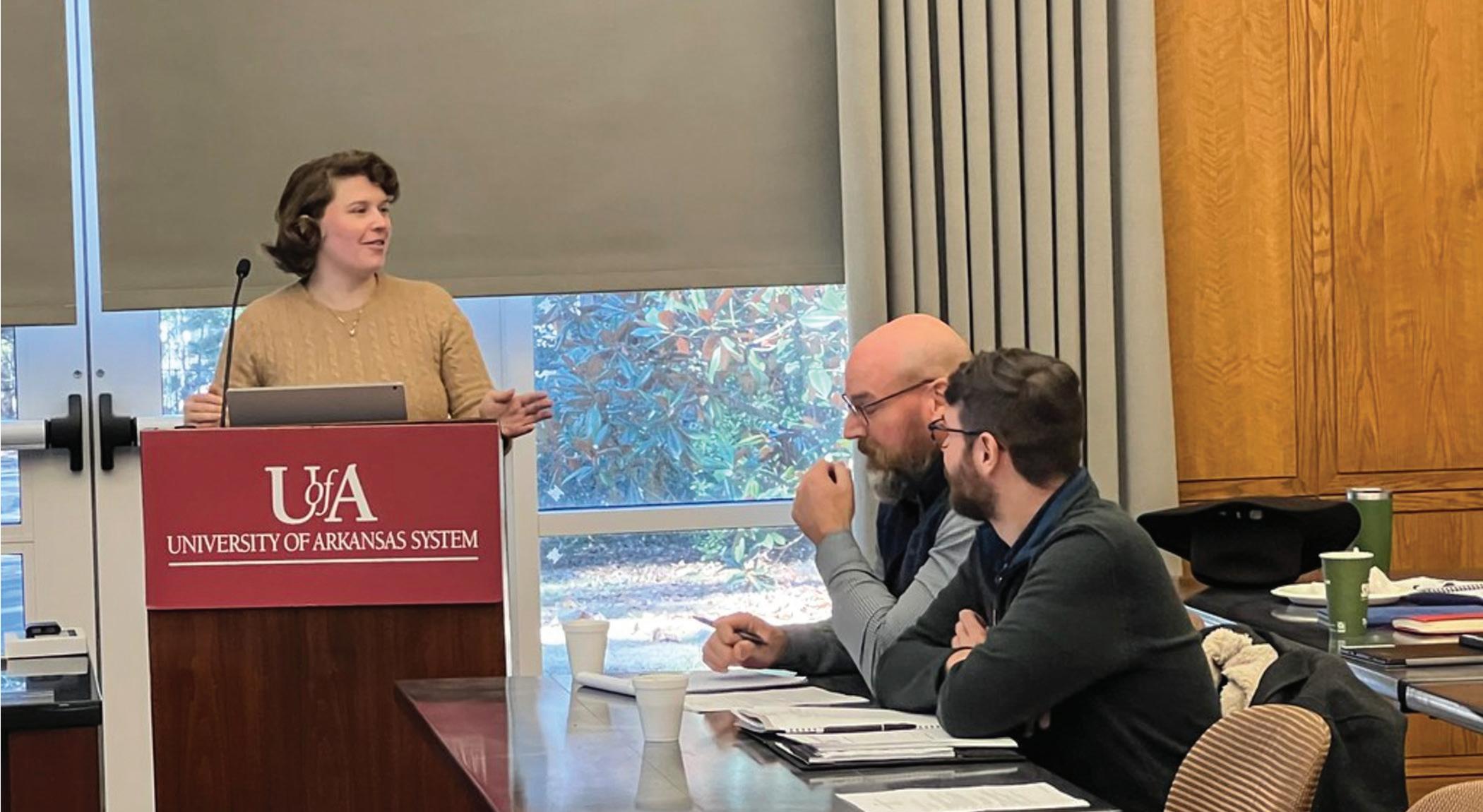
By Mary Hightower University of Arkansas System Division of Agriculture
Upending of a 40-year precedent in rulemaking and a pair of end-of-year plot twists for two laws meant to prevent fraud and improve national security were just some of the events that marked a turbulent year in agricultural and environmental laws.
“It seems like just a few days ago we were at the beginning of 2024 and wondering what all might develop in the coming year,” said Harrison Pittman, director of the National Agricultural Law Center. “It turned out that 2024 brought in some of the most consequential developments in ag law and policy in a long time.
“2024 was a blockbuster year of court decisions and other legal developments and it’s hard to imagine how 2025 can top it, but I have a feeling it will,” he said.
In June, the United States Supreme Court overturned what was known as the Chevron deference, a 40-year-old doctrine which said that courts should generally defer to federal agencies for the rules they make, with the assumption that the agencies are subject matter experts and that the rules are reasonable. Chief Justice John Roberts, in a 35-page decision, called the doctrine “fundamentally misguided.”
“It’s a decision with wide implications that might take years to play out,” said Brigit Rollins, sta attorney for the National Agri-
cultural Law Center.
On Feb. 6, a federal court in Arizona issued a ruling to vacate the labels for three dicamba products that had been registered for use over-the-top of dicamba-resistant soybean and cotton crops.
“ e decision was the second time a court had ruled to vacate labels for over-the-top dicamba, and o cially leaves farmers without an over-the-top dicamba option for the 2025 growing season,” Rollins said.
roughout 2024, the Environmental Protection Agency continued to roll out portions of its new policy toward addressing endangered species concerns related to pesticide exposure.
“A nalized version of last year’s herbicide strategy was released on Aug. 20, and a dra of the corresponding insecticide strategy was published in July,” Rollins said. “Both strategies outline pesticide-use restrictions that are aimed at reducing pesticide exposure to species listed as threatened or endangered under the Endangered Species Act.”
A court decision issued by the District of Columbia Circuit Court of Appeals in mid-November unsettled a 50-year-old environmental program a er the court determined that the Council
on Environmental Quality, or CEQ, lacks rulemaking authority.
“CEQ is the federal agency responsible for administering the National Environmental Policy Act, a law passed by Congress in 1969 that requires all federal agencies to consider the environmental impacts of their actions,” Rollins said. ”Although implementation of NEPA has been largely unchanged in the decades since it was rst passed, the recent D.C. Circuit Court ruling has made the future of NEPA uncertain.”
e Corporate Transparency Act, or CTA, was still a little-known law heading into the months before the Dec. 31 deadline for businesses to le bene cial owner information in order to comply.
e act was passed in 2021 with a goal of cracking down on shell companies and preventing money laundering, said Elizabeth Rumley, senior sta attorney at the National Agricultural Law Center. Reporting required by the law began Jan. 1, 2024, and was expected to a ect more than 32 million businesses, including more than 230,000 farm operations, according to the American Farm Bureau.
In March, a federal court in Alabama suspended the law’s requirements for plainti s in National Small Business United v. Yellen. On Dec. 3, a federal court in Texas issued a nationwide injunction.
e ruling by U.S. District Judge Amos Mazzant in the case Texas Top Cop Shop, Inc. v. Garland determined that the “CTA is likely unconstitutional as outside of Congress’s power. Because the Reporting Rule implements the CTA, it is likely unconstitutional for the same reasons.”
“ e federal government has indicated that it plans to appeal

“2024 brought in some of the most consequential developments in ag law and policy in a long time.”
HARRISON PITTMAN
the ruling, but at the moment, all enforcement of the law, including deadlines, is on hold,” said Elizabeth Rumley, senior sta attorney for the National Agricultural Law Center. “Entities that are required to report should pay close attention to this topic, because future developments may impose or reinstate reporting deadlines with a limited time to respond.”
Nearly half of the nation’s states have laws that put some kind of limits on foreign ownership of real property, particularly agricultural land, located within their state. From 2021-2022, 12 states proposed such laws, but in 2023, 36 states considered at least one measure that sought to restrict foreign investments, 12 of which enacted such a law.
Last year, Arkansas became the rst state to take an enforcement action under its law, ordering ChemChina to divest its holdings in Craighead County.
In July, a federal court based in Atlanta halted enforcement of a Florida law restricting foreign ownership of real estate. In December, a federal judge in Arkansas issued a restraining order on its foreign-owned land law, as well as a second law regulating digital mining centers.
“We’ll likely see more proposals in various states, including amendments to existing laws, as well as continuation of the litigation process,” Pittman said.





By Ronnie Levy
U.S. long-grain rice has long been considered the quality standard of the world. In recent years, however, a number of both domestic as well as international customers have complained about the quality of some southern u.S.-produced long-grain rice.
The complaints have focused primarily on the high levels of chalk in much of the recently produced long-grain rice. However, there have also been negative comments about milling, non-uniformity of grain size and problems with cooking characteristics.
The causes of the quality issues in u.S. long-grain rice are complex and not due to one specific factor. rice that matures under very high temperatures will typically have more chalk issues in the milled grain, resulting in lower milling yields and other quality issues; so environmental conditions can be a big part of the problem. However, another factor is an increasing percentage of rice acreage in this region has been planted with rice types that have very high yield potential but inherently poorer milling attributes and other quality issues.
another factor can be the commingling of long-grain varieties. Commingling is when quantities of rice from different varieties are mixed together and not kept variety specific. Mixing of varieties is not much of an issue when the varieties are similar in grain attributes, such as size, shape, uniformity, color, cereal chemistry, bran thickness and others. However, when there is considerable variation in some of these characteristics, commingling can lead to substantial quality issues in the final milled product. To illustrate why this problem has evolved, consider the number of different varieties grown.
In 2023 in Louisiana, we grew 25 different long-grain varieties/hybrids, seven of which accounted for at least 5% of the state’s acreage. Many of these quality characteristics are primarily genetically controlled; others are primarily environmentally controlled. Many are genetically controlled but also highly influenced by environmental factors.
One attribute in this latter category is grain chalk. Chalk is an opaque area of the rice kernel that is visually similar to the appearance of blackboard chalk. Chalky rice occurs when part of the grain is whiter than the rest because in this area the starch has not developed properly. Chalk can vary from being present in a small portion of a rice kernel to encompassing virtually the entire kernel. Chalk can be a point of weakness in the grain, and when chalky rice is milled, it is more likely to break. However, many chalky grains make it through the milling process intact, and a high level of chalky whole grains are certainly considered an unfavorable trait. Because chalk is greatly influenced by environmental growing conditions, high temperatures during grain-filling stages can lead to this characteristic. Some varieties are fairly resistant to chalk and will not display high levels even when that variety is grown under high temperatures.
an example would be an older variety, Cypress. Some varieties

“Chalk can be a point of weakness in the grain, and when chalky rice is milled, it is more likely to break,” Levy said.

“Chalky rice occurs when part of the grain is whiter than the rest because in this area the starch has not developed properly.”
always have very high levels of chalk even when grown under ideal conditions. Most of our varieties are in a middle group, always showing a moderate amount of chalk but with increasing levels when grown under high temperature conditions. Even in this middle group, some of these varieties are always more prone to higher levels of chalk. Many of these have a higher inherent yield potential and thus are being grown on an increasing percentage of the long-grain acreage in the region.
as these types of rice have become a greater portion of the total long-grain crop in the southern u.S., thus have our overall chalk and perhaps other quality problems become more of an issue. What complicates the issue is that certain markets really don’t discriminate against rice with high levels of chalk, and some actually prefer this characteristic. However, these markets are the exception and not the rule.
While the u.S. Department of agriculture rice grading system can lead to price discounts when amounts of chalk are excessive, often rice which grades #2 will still have levels of chalk unacceptable to some customers. This is a very complex issue and one that will not be solved overnight. as a rule, Louisiana typically produces a higher percentage of higher quality rice than our neighboring states. There is currently an effort underway to develop mechanisms for farmers to capture price premiums based on higher quality.

Assistant Research Professor/ Rice Extension Specialist University of Missouri
jchlapecka@missouri.edu
I’d like to utilize my space this month to express my appreciation to all readers over the past three years who I’ve been contributing to Rice Farming magazine for. The Specialist Speaking column has been a regular for me from December-May, and while this may be my last specialist column, don’t look for me to go away completely!
I have been in the Extension rice specialist role at the university of Missouri since august of 2021, but by the time you’re reading this article I will have assumed a new role within the industry. I have accepted a position with the university of arkansas as an assistant professor and research agronomist at the new northeast rice research and Extension Center near Harrisburg, arkansas. My wife robyn and I are truly elated to be moving back to arkansas and just down the road from my hometown of newport.
Saying goodbye to our Missouri farmers, consultants, industry leaders, colleagues, and neighbors has not been an easy task. We’ve received unwavering support during our time here in Missouri, and I would not trade the past 3.5 years for anything. We’ve been truly blessed in our time here, and I know that my successor will experience the same joys I have experienced. Southeast Missouri — the Bootheel — has some of the best farmers and consultants I’ve ever had the pleasure to work for and with.
While it’s not easy to say goodbye, it’s not a final goodbye. I’ll be just one hour south of the Missouri-arkansas border, and my phone line is always open! My new position will give me the opportunity to continue the work we are doing in rice, but also to work in other row crops such as soybean and corn. I’m excited to open new doors in row crop research.
My final tagline deserves an emphatic repeating — I am truly beyond blessed to be serving the rice industry in the Mid-South. God has poured so many blessings on robyn and I that we truly do not deserve. Please reach out to me anytime with comments or questions. To all my friends, eat MO (and ar) rice!

DR. JARROD T. HARDKE ARKANSAS
Professor/Rice Extension Agronomist University of Arkansas System Division of Agriculture jhardke@uada.edu
Performance of selected cultivars in the Arkansas Rice Performance Trials, 2022-2024.
Cultivar Grain Type 50% Heading Grain Yield (bushels/acre) 202220232024Mean
CLL16 L91173176181177
CLL18
Ozark L89190184187187 ProGold L4 L86----180180 PVL03 L88163160152158 PVL04 L90--162175169
RTv7303 L80----188188
RT 7302 L85196227211211
RT7331MA L84191210206202
RT7321FP L86177215--196
RT7421FP L86183214210202
RT7431MA L88--204--204
RT7521FP L87196215201204
RT7401 L86197208211205
RT XP753 L85200214206207
CLM04 M89158162176165
CLM05 M90--178191185
DG353M M88156153181163
ProGold M3 M88--183188186
RT3202 M82--217207212
Taurus M86181186181183
Titan M84156161189169
One initial note as we move through the options — from a yield standpoint, a lot of options did really well in 2024, which is great, but it doesn’t always help us separate options in terms of what gives us the greatest dependability and consistent yields. Milling yields are also of increasing concern given the results of the past two seasons, but virtually every option had milling issues this year so there’s no short-term fix for that.
note that in the table provided at the above this article, the intention was to provide whatever performance data we might have on cultivars that could be an option to be grown this year. In some cases, that means maybe only one year of data, but at least that provides you with one year’s comparison, which is better than nothing. Following a similar theme as in past years, we’ll start with longgrain conventional (non-herbicide-tolerant) varieties. Ozark and DG263L have multiple years of good performance under their belt
The 2025 season is sure to be a wild ride, so saddle the horse and get ready to load the wagon. Cultivar selection is going to be an interesting start, as we’re likely going to have to work with what we can get our hands on rather than getting all our preferred choices.
and should be solid options. rTv7303 performed well in its first year of wide availability and should be looked to as another option (it’s a variety, not a hybrid).
For conventional hybrids, rT7302 would be the favorite with XP753 still serving as another solid option. For FullPage hybrids, rT7521FP will once again be the most popular with rT7421FP and rT7321FP competitive to be in the mix. For Maxace hybrids, rT7331Ma we’ve seen the most of and it should do well, while one year of data on rT7431Ma suggests it’s competitive.
Clearfield varieties really boil down to CLL18 and CLL16 in arkansas. CLL18 has the highest top-end yield potential, but CLL16 has a little better overall package and appears to be very stable. CLL19 has been competitive at times but has not kept up as well the past two seasons.
For Provisia, PVL04 is the preferred option based on multiple years of data. There will also be limited availability of DG563PVL, which looked very good in one year of testing. There is only one Maxace variety option, rTv7231Ma, with good performance but the early maturity means we have to get it harvested quickly.
While the jury is still out on where the medium-grain market is headed, options on what to grow continue to improve. rT3202 (hybrid) has had the highest yields the past two seasons. Taurus, ProGold M3, and CLM05 appear to be very competitive among varieties. Of note, ProGold M3 seems to have some of the most stable milling yields of anything available.
The 2025 season looks to be a tough one, so we want to spread our risk around, but minimize it at the same time. This is a year to focus on what we think will pencil out the best in the end — to use baseball terms, base hits will be key; sure we’ll take a homerun, but we cannot afford a strikeout.
review the results of the arkansas rice Performance Trials at https://uaex.uada.edu/rice. The provided table shows general performance data, but full details of all sites are provided in the complete published data. Let us know if we can help.

DR. RONNIE LEVY
LOUISIANA
Extension Rice Specialist
Louisiana State University
RLevy@agcenter.lsu.edu
rice breeders are often asked what they look for when making selections. The answer is complex. rice varieties are composed of many genes that control every function of the individual plant. Some plant traits are controlled by only one gene (simply inherited), while others are controlled by many genes (polygenic).
an example of a simply inherited trait is the presence (pubescence) or absence (glabrous) of leaf hairs. This trait is controlled by a single pair of genes, each inherited from a parent. an example of a polygenic trait is yield. yield potential is controlled by many genes. In general, the physical expression of polygenic traits is subject to environmental influence. This means even though a plant possesses a complex of genes with potential for high yield,
under unfavorable conditions, high yields won’t be realized. For example, the avant variety has a high yield potential, but it won’t be realized without adequate nitrogen. Plant breeders face a tremendous challenge in breeding successful varieties. The rice grain of a long-grain variety must have certain dimensions, and the grains must be uniform in size. The height of the plant must be tall enough to provide a structure to support high yield as well as facilitate harvest, but not too tall to be susceptible to lodging. Plant height is another simply inherited trait. But, the expression of that potential is influenced by environmental conditions. Disease resistance is another breeding objective for rice research station breeders and pathologists. Selecting for this trait requires the presence of the proper disease causal agent. Sheath blight is the most troublesome disease in Louisiana rice production. To facilitate screening for resistance to this disease, the breeder will typically inoculate plots and rows with rhizoctonia solani, which is the fungal organism that causes this disease. For diseases like rice blast, planting highly susceptible varieties around breeding nurseries will usually assure high disease pressure and eliminate need for inoculation. This illustrates the importance of knowing each disease to create the most favorable environment for effective disease screening. Milling quality is another aspect of a successful variety. There are numerous factors that influence this. One of the most important is the percentage of whole (unbroken) grains remaining after the milling process. This is an example of a trait with a high level of genetic control but also substantial environmental influence. Grain shape and uniformity are important. Some rice varieties will have fairly low whole-grain milling yields, regardless of the environment. Others have high milling yields in favorable environments but much lower yields under unfavorable conditions. The grain moisture at harvest can have a significant impact on this characteristic as can the field conditions under which the plants are grown and the conditions under which the grain is artificially dried after harvest. Drying at excessive temperatures can dramatically reduce milling yields. This shows why this trait is a difficult one to select for; the true measure comes when samples are milled. another important aspect of grain quality is the amount of chalk present. Chalky rice occurs when part of the grain is whiter than the rest because the starch has not developed properly. This is a point of weakness that can increase breakage during the milling process. Even if the grain does not break, chalky rice is aesthetically unpleasing and can greatly reduce the quality of the rice sample. This is another trait controlled by genetics but also highly influenced by the environment under which the grain develops. Typically, levels of chalk are higher when the rice grain grows under higher temperatures. Some varieties are inherently more resistant to chalk formation even under high temperatures, and their identification is important during the breeding process. The traits discussed are just a few of the multitude of traits that must be considered when a rice breeder is making selections. Others include seedling vigor, cold tolerance, response to plant growth regulators, cycle, grain shattering, herbicide tolerance or resistance, insect resistance, panicle exertion, seed dormancy, and ratooning characteristics. Putting all these traits together is what keeps rice variety development the most important consideration in rice production.

SAM RUSTOM TEXAS
Assistant Professor and Extension Agronomist
Texas A&M AgriLife Research and Extension sam.rustom@ag.tamu.edu
It’s no secret choosing the right variety is one of the most important management decisions a grower can make. It’s also no secret it has historically costed more to grow rice in Texas than anywhere else in the South.
To make a long story short, this is a big reason why the overwhelming majority of Texas rice is hybrid. Because of this, Texas rice farmers are in a financial position where the higher yield potential of hybrid rice pencils out best when making this important cropping decision. Couple that with the amount of seed rice our farmers produce for riceTec, and it’s easy to see why we produce so much hybrid rice. In 2024, our most popular hybrid varieties were rT7301 and XP753.
That being said, it’s still possible to turn a profit growing inbred rice, especially with our ability to ratoon. I would like to highlight some of the newer inbred varieties available that I think will have a major impact on Texas rice production moving forward.
Our most popular inbred grown in 2024 was CL153 as expected. We also had several CLL19 and avant fields around the state that looked fantastic prior to the hurricane. I could easily see CLL19 replacing CL153 as top inbred contender due to its high and stable yield potential, very good milling potential, and good ratooning potential. It contains the Pita and CrSP2.1 genes, making it resistant to blast and narrow brown leaf spot, respectively. In 2023, CLL19 seed rice fields in Texas, Louisiana, and Missouri averaged a staggering 60 barrels per acre in the main crop. avant is a relatively new conventional inbred variety. This very early maturing semi-dwarf, long-grain variety was developed by LSu and averages around 50 barrels per acre with good milling characteristics. Given its early maturity, avant has fantastic ratoon potential, good main crop yield potential, and contains the CrSP2.1 gene for resistance to narrow brown leaf spot. It has consistently yielded 5%-10% more than Cheniere.
Last of the inbreds, but most certainly not least, are the quizalofop-resistant Provisia and Maxace rice production systems. I’m perfectly comfortable saying that if barnyardgrass or weedy rice is your main issue, these two systems are among the best grass control options I’ve ever seen in rice. although current acreage is limited in Texas, I expect acres to pick up over the next several years as varietal development continues to improve with regard to yield. In several locations this year, we were able to confirm barnyardgrass populations resistant to multiple modes of action, including regiment (bispyribac), Facet (quinclorac), newpath (imazethapyr), and Stam M4 (propanil).
unfortunately, the barnyardgrass issue isn’t going anywhere and
will continue to expand, but the Provisia or Maxace varieties will serve as an excellent foundation for barnyardgrass management strategies moving forward. In addition, these varieties will serve as an excellent replacement to the Clearfield system in fields where weedy rice resistant to newpath and Beyond has been a problem.

UCCE Rice Specialist balinquist@ucdavis.edu
In California, most acreage is devoted to high quality, medium-grain varieties. In 2024, over 94% of the acreage was grown to medium grains. Of the medium grain varieties grown, the most widely grown variety was M-206 (27%) followed by M-211 (19%), M-105 (17%), M-209 (16%), M210 (14%), and M-401 (4%).
M-206 is the most widely grown, but it’s been decreasing. This is partly due to the introduction of M-210, which is almost the same as M-206 but with blast resistance. Both have similar yield potential, duration, and environmental and milling yield stability. When thinking about a short-duration variety, M-105 is an excellent choice. It’s about one to two days earlier than M-206 in the northern part of the valley and three to five days earlier in the southern, cooler parts. It has excellent yield potential and tends to yield highest in our trials located in the southern part of the valley. It’s a good choice to plant early in season in order to get an early start on harvest. M-105 reportedly has a tendency to lodge; however, in our trials, we have not seen a difference between M-105 and M-206.
Interestingly, the acreage planted to long-duration varieties increased in 2024, despite it being a late-planted year. not considering M-401 (a premium quality variety), 36% of the acreage was planted to M-211 and M-209. This is the most acreage we’ve seen devoted to longer-duration varieties in California. These varieties are about seven to 10 days longer than M-206. Longer duration also indicates a longer period to irrigate and higher water requirements. They also have a higher yield potential than the shorter duration varieties.
While having a higher yield, M-211 is prone to low milling quality when harvested at low moisture contents below 20% or if the field is drained too early. M-209 is sensitive to low nighttime temperatures during booting and not recommended for the cooler areas in the southern part of the valley and in the Delta.
On a positive note, these varieties are less prone to lodging. This is partly due to thicker tillers. Some growers say managing the rice straw in M-211 is harder than other varieties. Where kernel smut is an issue, M-209 is one of the more susceptible medium grains.
On the rOXy front, M-521 has been approved for release. This is California’s first herbicide-resistant variety. However, seed production will not proceed until the herbicide is approved. This may be a while.

My first thoughts of rice being grown in Texas was in agronomy class at Texas Tech when Dr. Clark Harvey told the class about rice in the state. raised on the High Plains near Lubbock, I could not imagine that much water in Texas, and I had my doubts of the state having enough water to raise rice.
I didn’t give it another thought for years as I had a job in a new and expanding field of hybrid sorghum. I worked in seed production and then in research. The job required travel from South Texas all the way to South Dakota in the winters, then work in Puerto rico. That was hard to do with my young family, so I was glad when offered a job where I could return to Texas.
In Texas working with seed certification, one project was questions of purity problems with foundation seed of two new rice varieties. That was when my boots waded an actual Texas rice field. One thing led to another, and in 1975, I was offered a job in El Campo at a seed rice company. Visiting with local farmers, I learned the many and varied problems they faced. not long after we moved, I met reed Green and Fred Miller. They were both entomologists and had recently set up a crop consulting business. Learning I was trained in agronomy, they asked me to join them. Soon, a farmer I worked for on soybeans asked if I could also help on rice.
were the progeny of a single plant of barnyardgrass that mutated and survived propanil applied in the previous rice crop.
Shortly after this incident, other farmers started to have problems killing barnyardgrass. I probably would not have recognized what was happening if I was not at the right place at the right time and had some training in genetics and the curiosity to recognize minor differences in plant characteristics and cultural patterns. Propanil-resistant barnyardgrass had never been reported in the u.S. after a few years, it was confirmed by scientists and published in scientific journals. My rice business grew, and things got really interesting, really fast.
Luck was that I had been working with a company that had a new herbicide with good grass activity. Farmers soon found that, under certain conditions, they sometimes had injury. Lots of work and lots of things to be learned!
“My rice business grew, and things got really interesting, really fast.”
I soon appreciated that, with rice, there were opportunities for control, or at least manipulations of plant culture, by water management. rice and soybeans were my main crops with enough sorghum, corn, wheat, sunflower, sesame, flax, and turf keep it interesting.
The new profession of independent crop consulting was rapidly expanding, and members were trying to define its direction. I was a new member to a new profession that was largely made up of entomologists. Several of them recognized there needed to be a broader, multidisciplinary training and degree program. I joined them in an effort to build an education and degree similar to the veterinary profession.
There was one particular rice field a client planted and sprayed with propanil herbicide. It appeared to do a good job until we started to hold a flood. Then circular spots of grass about three to five feet in diameter showed up above the rice. They were not missed application streaks — just isolated random spots of barnyardgrass — about two to four per acre. Glume color, awn length, and leaf color all varied between spots. Closer examination revealed that all the plants in a spot had the same physical characteristics. To me, that showed that all in that spot
We put together several proposals and made presentations at meetings of scientific societies. There was a lot of interest from potential students. Professors could not decide which department to fit it into. The high point of this effort was when I got to sit down with Dr. norman Borlaug in his office and outline our proposal. He was very encouraging and agreed it was very needed.
There are now active programs in Florida and nebraska, and I am happy to report there is still rice being grown in Texas!
—
Dan Bradshaw El Campo, Texas
Rice Farming’s My Turn column is devoted to telling unusual “farm tales” or timely stories from individuals in the rice industry. Now it’s your turn. If you’ve got an interesting story to tell, send a short summary to cnemec@onegrower.com. We look forward to hearing from you.

As challenges for producers mount this season, our team is working tirelessly to provide the latest in pro table production strategies to help boost your bottom line.




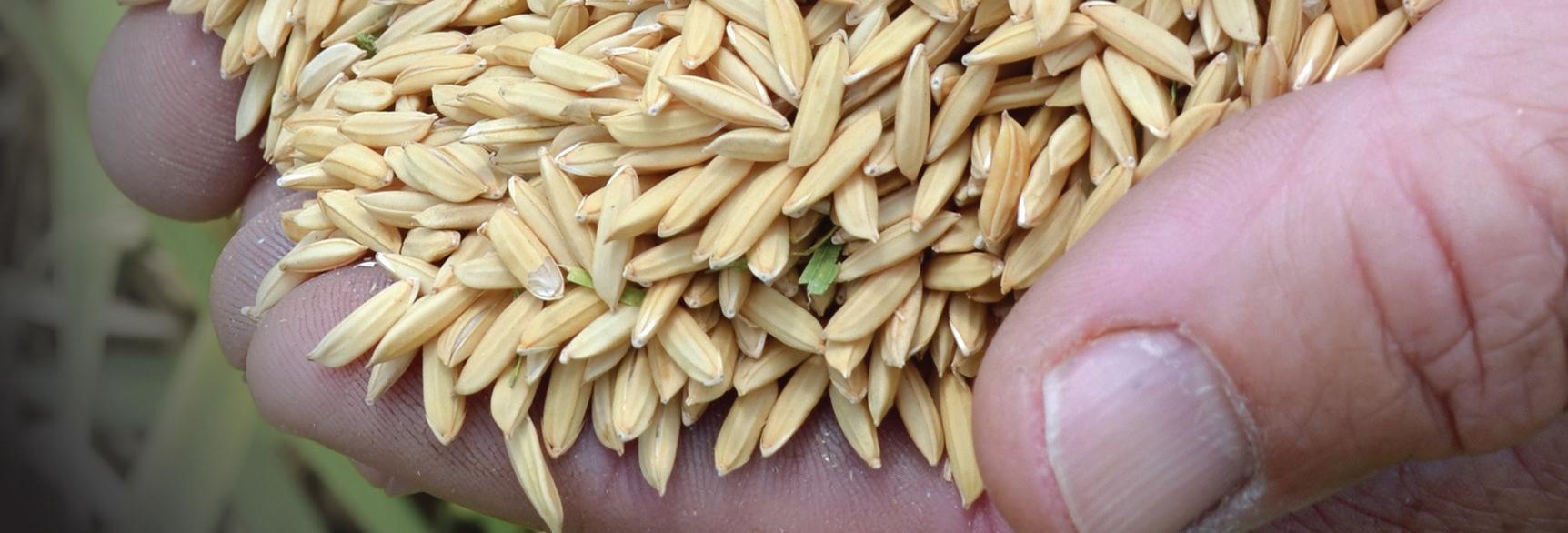
Don’t miss an issue! Scan the QR code with your phone to renew today for FREE!




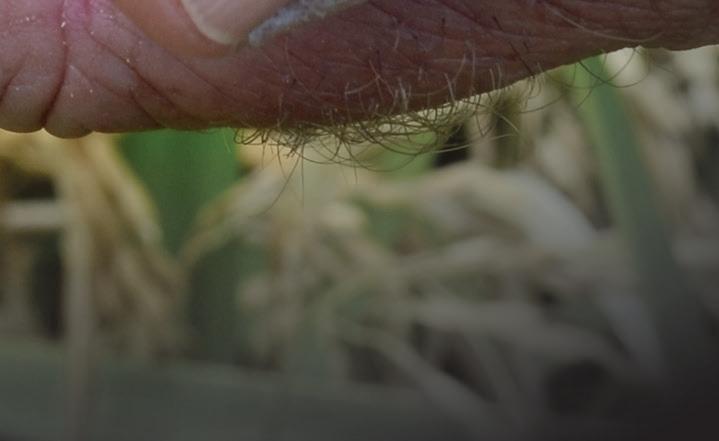

To advertise, contact Associate Publisher/Sales Scott Emerson, 386-462-1532 or semerson@onegrower.com
For almost 60 years, our Rice Farming team has worked in partnership with farmers, industry experts and more to provide profitable production strategies to help boost your bottom line.





